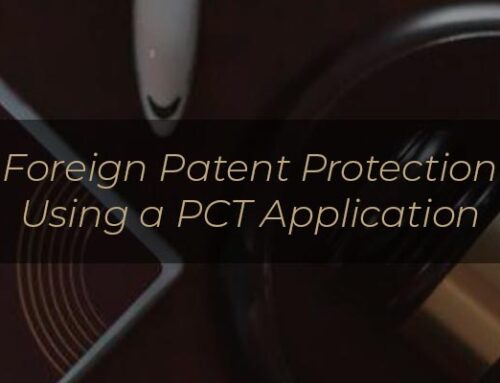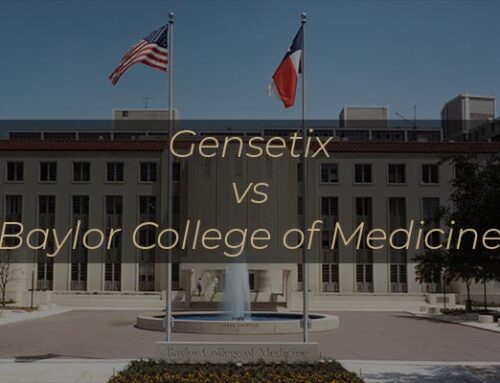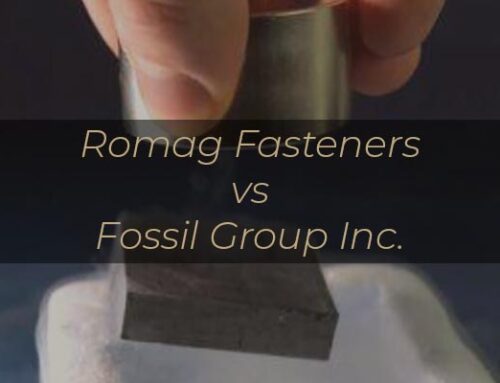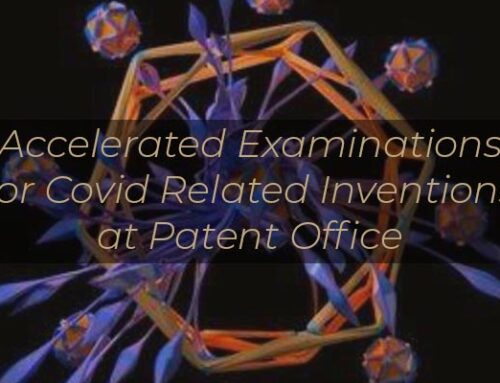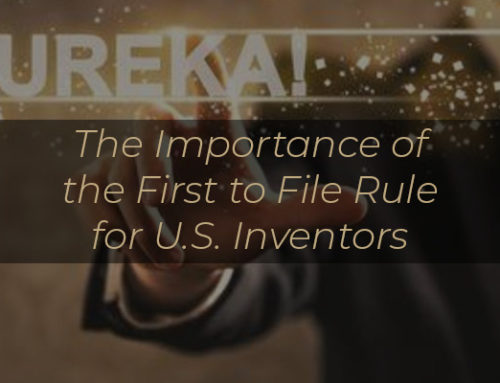UNDERSTANDING 35 U.S.C. § 101 AND THE ALICE DECISION
Overview
Section 101 sets forth the type of inventions which are entitled to be patented (assuming they meet the other requirements for patentability, such as novelty (under Section 102) and non-obviousness (under Section 103)). As detailed below, the Supreme Court of the United States has interpreted Section 101 to prevent certain types of inventions from ever being patented, such as inventions which comprise laws of nature, natural phenomena and abstract ideas. Some of these court-created exclusions are similar to exclusions which exist under the laws of other countries (for example, Article 52 of the European Patent Convention indicates that scientific theories, mathematical methods, and schemes, rules and methods for performing mental acts, playing games or doing business, and programs for computes, are not eligible to be patented in a European patent).
It is often difficult to determine whether a particular invention fits into one of the court-created exclusions in the U.S. Different examiners at the U.S. Patent Office may take different positions regarding the types of inventions which are patent eligible, and the U.S. Patent Office and the courts have often reached opposing or inconsistent positions regarding the patentability of an invention. It is thus important to not only draft patent applications with consideration of potential Section 101 issues, but to be prepared to argue that an invention is eligible to be patented if a rejection is posed by the U.S. Patent Office. Many patent applications are doomed for rejection and abandonment because they are not well-drafted in the first instance and/or the patent applicant is unprepared to argue against a Section 101 rejection of the application by the examiner.
Weide & Miller is experienced in dealing with Section 101 issues, including rejections posed by the U.S. Patent Office against the patenting of inventions such as business methods, games and software. Weide & Miller’s patent attorneys routinely address Section 101 issues when working with a client to determine whether a patent application should be filed and when drafting patent applications to better posture them for a positive review and are experienced in arguing the patentability of inventions under Section 101 against examiner rejections.
A Brief History of Section 101
The statute outlining what inventions are entitled to be patented in the United States is straightforward. Specifically, 35 U.S.C. § 101 adopted in the 1952 Patent Act states, “Whoever invents or discovers any new and useful process, machine, manufacture, or composition of matter, or any new and useful improvement thereof, may obtain a patent therefor, subject to the conditions and requirements of this title.” On its face, the statute suggests that most inventions should be eligible to be patented – so long as they meet the other requirements for patentability.
However, in 1972 the Supreme Court chose to ignore this plain statutory language reverting to pre-1952 case law to create judicial exceptions to patentable subject matter. [1] These judicial exceptions define types of inventions which the Supreme Court indicates may never be patented and include laws of nature, natural phenomena, and abstract ideas.[2] While the application of these exclusions was curtailed for a time due to the Supreme Court’s 1981 decision in Diamond v. Diehr[3], the application of these exceptions to Section 101 has returned again and has largely swallowed up the straightforward structure of the patentable categories laid out in the statute.
In 2010 in the case of Bilski v. Kappos,[4] the Supreme Court again took up the issue of patent-eligible subject matter, rejecting a “Machine or Transformation” test which the Court of Appeals for the Federal Circuit had proposed (the Federal Circuit attempted to interpret the Supreme Court’s earlier precedent on Section 101 and asserted that the precedent indicated that an invention was patent-eligible under Section 101 if: 1) it was tied to a particular machine or apparatus or 2) transforms a particular article into a different state or thing). However, the Supreme Court did not offer any replacement test until the twin cases of Mayo Collaborative Services v. Prometheus Laboratories, Inc.[5] and Alice Corp. Pty, Ltd. v. CLS Bank Int’[6] in 2012 and 2014, respectively.
In these cases, the Supreme Court articulated a two-step test for determining patentable subject matter (the “Alice Two-Step Test”). The first step is to determine whether the claims are directed to one of the judicially-created exceptions of patentable subject matter. The second step is to determine whether the claimed elements individually or as an ordered combination include an “inventive concept” sufficient to ensure that the patent in practice amounts to “significantly more” than the judicial exception. [7] Under previous case law, it was generally thought that the “abstract idea” exception to Section 101 did not apply when the invention was or was tied to physical apparatus or physical actions/steps. However, after the Alice decision, even inventions which were tied to computers or other devices, which included physical elements or physical actions/steps, may be characterized as mere abstract ideas.
Needless to say, the application of this indefinite test handed down by the Supreme Court has not produced any consistency in its application and results. Subsequent decisions by the lower Court of Appeals for the Federal Circuit have not provided much clarity to the application of this test. Outcomes in cases involving Section 101 issues vary based upon the district court judge and the panel of judges assigned to the appeal, with many decisions seeming entirely inconsistent with one another. If any theme can be drawn from the application of the “Alice Test”, it is that the outcome of the test is determined based on the court’s characterization of the claims. If the court decides to characterize the claims as incorporating a technological solution to a problem in the industry, or as improving the functionality of a computer device itself, then the claims will be found eligible. If the claims are characterized broadly as being directed only towards an underlying principle, the claims will be found ineligible.
Practical Issues Where Weide & Miller Can Provide Support
- The Alice decision has retroactively impacted the potential validity of existing patents and has impacted the patentability of new inventions, even in situations where similar inventions were previously found to comply with Section 101.
- If you have an existing patent and wish to enforce it, sell it or license it, consideration should be given to the strength of the patent in view of Alice. As noted above, the Alice decision has impacted the validity of many existing patents – even though those patents were reviewed and granted by the USPTO.
- If you are charged with infringement, consideration should be given to whether the asserted patent is valid under Section 101, including under the new Alice guidelines.
- If you have a new invention and wish to patent it, consideration should be given to the risk that the invention could be deemed to be patent-ineligible. Careful drafting and prosecution of the patent application may greatly improve the potential for the invention to be patented.
- Gaming inventions have been subject to particular scrutiny under Section 101. Since the Alice decision, Section 101 has posed a new and significant hurdle to patenting new gaming-related inventions (e.g. new games including new methods of game play including games presented by software at a gaming device or played at a gaming table). In particular, in the case of In re Smith[8], the Court of Appeals for the Federal Circuit ruled that claims which were directed to a new method of conducting a wagering game were directed to a “set of rules for a game” and comprised an abstract idea and were not patentable under Section 101, even though the claims cited the physical aspects of using physical playing cards and steps involving shuffling and dealing of the cards. The Smith decision has widely been cited by USPTO examiners as a basis for rejecting new patent applications which are directed to gaming-related inventions. That said, Weide & Miller has been successful in issuing hundreds of patents in the gaming space, including after the Alice decision.
Summary
While the court-created exclusions to Section 101 creates many difficult issues, careful consideration and attention to those issues can improve the probability of a successful result.[9]
[1] See Gottschalk v. Benson, 409 U.S. 63 (1972) (citing Mackay Co. v. Radio Corp., 306 U.S. 86, 94 (1930); Rubber-Tip Pencil Co. v. Howard, 20 Wall. 498, 507 (1874); Le Roy v. Tatham, 14 How. 156, 175 (1852); and Funk Bros. Seed Co. v. Kalo Co., 333 U.S. 127, 130 (1948)), (holding that claims directed towards a method of programing a computer to convert binary-coded-decimal numerals into pure binary numerals are not patent eligible). See also Parker v. Flook, 437 U.S. 584 (1978) (holding that claims directed to calculating and updating alarm limits on an alarm system for a catalytic converter process are not patent eligible).
[2] Id. at 67.
[3] 450 U.S. 175 (1981) (holding that claims directed to a computer program calculating the Arrhenius’ equation used to control a process for molding rubber products are patent eligible).
[4] 561 U.S. 593 (2010).
[5] 566 U.S. 66 (2012).
[6] 134 U.S. 2347 (2014).
[7] Id. at 2355.
[8] In re: Ray Smith, Amanda Tears Smith, Appeal. 2015-1664 (Fed. Cir. 2016).
[9] The statements herein should not be interpreted as a warranty or guarantee of a particular result, as the outcomes of legal matters such as these are difficult to predict and are based, in part, over the decisions of third parties over which Weide & Miller has no control, including the USPTO and the courts.


